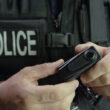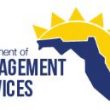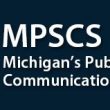Expert says P25 digital trunking is no magic bullet
Last week in MRT Bulletin we included a news item concerning Alamosa County, Colo., which recently connected to the state’s 800 MHz digital trunked radio system.
Alamosa is one of six counties located on Colorado’s western slope that banded together to form the San Luis Valley All-Hazards Emergency Management Region in order to qualify for a Department of Homeland Security Grant. (The DHS has made region-wide consensus on interoperability plans a major criterion for grant eligibility.)
The plan worked, as the DHS forked over $4.4 million. The remaining five counties in the region — Conejos, Costilla, Mineral, Rio Grande and Sagauche — are expected to connect to the system by the fall.
The item reminded me of a session I attended recently at IWCE 2005 in Las Vegas on Project 25 digital trunking conducted by Dr. Jan Noordhof, product manager for digital infrastructure at Tait Electronics. While acknowledging the enormous amount of interest in P25-compliant systems — particularly statewide trunking systems — since Sept. 11, 2001, Noordhof cautioned that such systems aren’t for everyone.
In fairness, it should be noted that while Tait currently produces trunking systems based on the MPT 1327 protocol — as well as P25-compliant mobiles, portables and base stations — the company does not have a P25 digital trunking system on the market. Nevertheless, Noordhof made some interesting points.
“Trunking is a great solution and tool, but it is not a band-aid that will solve interoperability problems for everybody,” he said. “It’s just one of several tools, and, in some circumstances, it won’t be the answer.”
Noordhof noted that trunked systems are more efficient than conventional systems — 50 radios or more can operate on a single channel — and more reliable. “It’s useful when a limited number of channels has to be stretched to accommodate an increasing number of users,” he said.
Also, should a channel fail in a trunked system, the affected radios can be moved to another channel with only a slight degradation of service. “They might queue longer, but the system isn’t crippled [when a channel goes down] as it would be in a conventional system,” he said.
Trunked systems also offer better security, as radios have to be registered — “You have more control over who’s using them and how,” Noordhof said — and the control channel can be encrypted. But these added capabilities come with a price attached to them.
“Trunked systems are more complex than conventional systems and that makes them more expensive,” Noordhof said.
He added that call setup is slower, about 250 milliseconds in fast systems, “but it can be a lot higher,” he said. “If you are in a time-critical situation, where you need rapid communications, this can be a nightmare.”
Noordhof told of a study conducted last fall by the Phoenix Fire Department of a 700 MHz/800 MHz P25 system that covered a 2000 square-mile area. The study indicated that radios lost contact inside buildings and that users often encountered delays ranging from one-half second to a full second — “intolerable in a time-sensitive situation,” he said. The department passed on digital trunking based on this study, Noordhof said.
Digital trunking also might not make a lot of sense for agencies operating a small system to set aside a channel for the control channel, he said. “Tying up a channel for a control channel in a two-channel system is just daft. The higher the number of channels, the more trunking makes sense.”
Noordhof added that P25 conventional systems offer many of the same interoperability capabilities offered by trunked systems. “You can actually get group calls on a P25 conventional system, so you might not need P25 trunking. You get a lot of capabilities in P25 conventional and the others might not be of interest to you,” he said. “While P25 trunking can improve interoperability, it’s not a magic bullet.”
Clearly, the tradeoffs described by Noordhof — particularly those concerning cost — probably won’t matter to any public safety entity that has just received a multi-million check from the federal government. But for those agencies not as fortunate, Noordhof’s perspective might be worth considering.
E-mail me at [email protected].
















